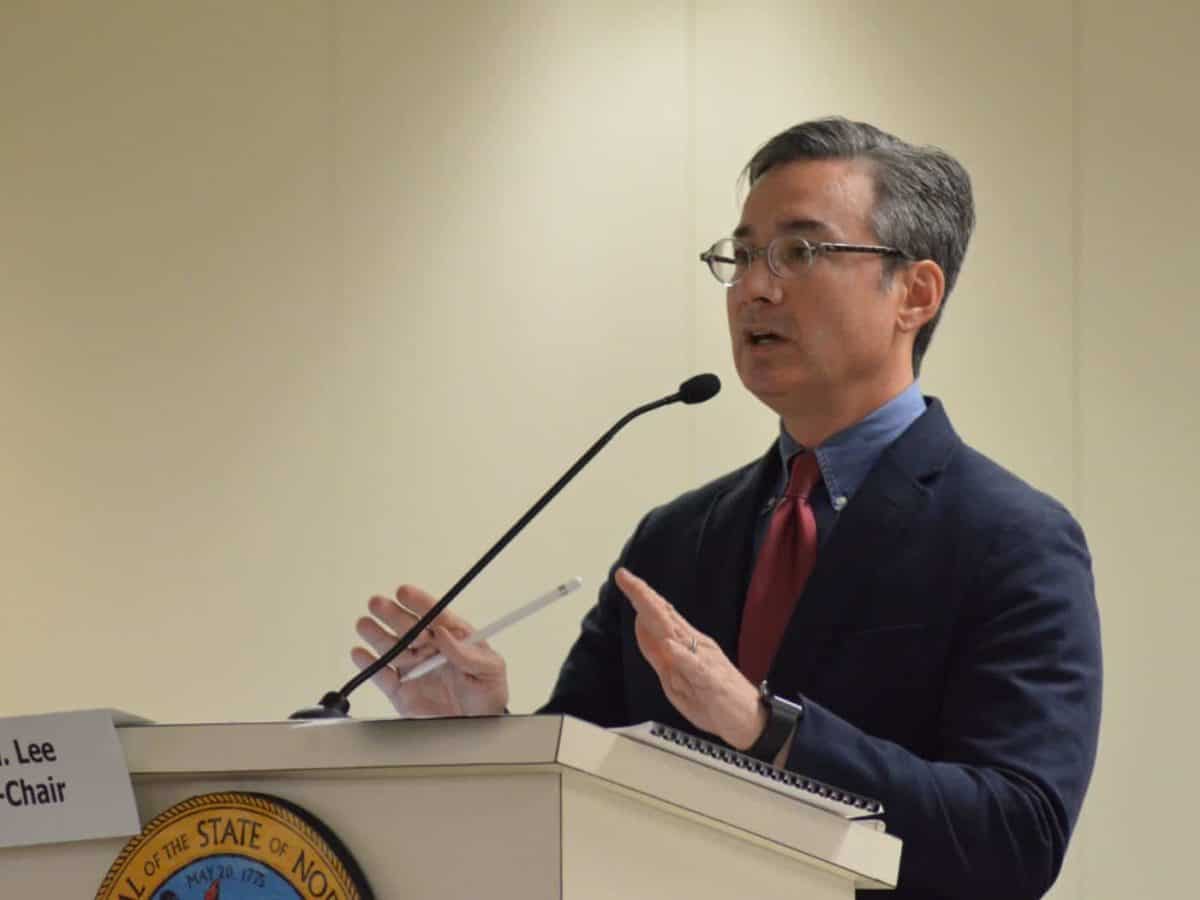

Chief Financial Officer of the State Department of Public Instruction Adam Levinson made a case to lawmakers on Wednesday that the current system of school funding is similar to the one they are pursuing.
The Joint Legislative Task Force on Education Finance Reform wants to understand the current way the state funds education and study the so-called weighted-student formula as a possible replacement.
But according to Levinson, the current system, which uses an allotment model, does much the same thing as the weighted-student formula.
Presently, the state doles out funds using a series of allotments — 37 in total. Schools are funded based on the number of students. The allotments are essentially line items designating a specific amount for classroom teachers, an amount for school building administration, etc. This is called the Resource Allocation Model.
“The allotments go together from the districts’ perspective, to give them a weighted pool of funds,” he said.
He explained that under the allotment system, a school receives a base level of funding for each student, and then depending on the students’ special needs, his or her school may be afforded more funding. For instance, students from low-income families or with special learning issues would bring more money to the school.
But Sen. Michael Lee, R-New Hanover, co-chair of the committee, took issue with Levinson’s characterization of the allotment formula as being similar to a weighted-student formula. He said it sounded, from Levinson’s description, that some aspects of education were weighted, but others were not. Levinson said the assessment was mostly accurate.
The meeting brought together Levinson and Alexis Schauss, director of the Division of School Business at DPI, to present how the state finances public education, detail school business processes in the state, and also give DPI’s reaction to the General Assembly’s Program Evaluation Division’s report that criticized the current system of education funding and became the impetus for the task force.
According to the Program Evaluation Division’s study from last year, there are serious issues with the system.
The weighted student formula that the task force is pursuing does things a little differently.
In this formula, rather than using a series of allotments, the money given to schools would be based on the student. The state would allocate a base amount of money for each student in the state.
The distribution of funds changes depending on the type of student. Assume, as an example, a typical student with no special needs affords the school $100. But a student who is in 2nd grade may get an extra 10 percent of that $100, or $10 because the student is in the K-3 category. If the student has a disability, the school receives an extra 60 percent of that $100 base, or an additional $60 dollars. In total, the school would receive total of $170 for the one hypothetical student.
Levinson used part of his presentation as an opportunity to argue that the current system mirrors the weighted-student formula system in many ways, but legislators challenged him on that notion. At the end of the meeting, one of his key takeaways was that the state already uses a weighted-student formula.
The topic of local financial flexibility also came up during Levinson’s presentation. In 1995, the General Assembly allowed more flexibility for local districts to use state funds according to their needs, Levinson said. He said the change to the law also included additional accountability to local districts for student outcomes.
Rep. Hugh Blackwell, R-Burke, asked about the accountability, implying that it had no teeth.
“Nothing happened to anybody…if students did or didn’t make progress?” he asked.
Levinson said the accountability was more about shining a light on student outcomes, rather than penalizing anyone.
Sen. Harry Brown, R-Onslow, also weighed in on accountability. He noted that while graduation rates have been rising, the academic ability of those graduating has not necessarily increased. He wondered if the tools in place to measure student outcomes were sufficient.
“I think what we did is we put in place the wrong measuring tool,” he said.
Blackwell asked Levinson if there was a process in place for the state to determine how local districts were using state funds. For instance, he wanted to know if the state could tell if the districts were taking money meant for students and using it for something like central office needs.
General Assembly staff said that districts are not able to take money from students for the central office, but central office funds can be used for students.
Sen. Jerry Tillman, R-Randolph, jumped into the discussion, saying he thought that districts needed more flexibility, not less. He argued that even if you hold districts accountable for how they spend money, districts report how funds are used. He said they have to be trusted.
“Do I give a damn where they spend it if they spend it on their needs and then they have to report on how those kids do?” he asked.
He also said that the state could get rid of all their special categories for funding if they just granted districts more flexibility.
Levinson also gave DPI’s response to the PED report’s analysis of the current allotment funding formula.
He said the report found fault with seven allotments in the current funding formula. On five of those, he said the report raised valid points.
He gave a breakdown of some of the PED findings, agreeing on certain points: the way the central office allotment works causes an inequity in distribution of funds, and the low-wealth supplemental funding allotment skews the distribution of funds towards certain counties. But he took issue with the idea that there was a problem with the classroom teacher allotment.
The PED report found that this allotment favored wealthy LEAs. Levinson said that the finding appears to misunderstand the allotment.
He made the analogy to having three kids, all of whom want to go to college. If he told the kids he would pay a certain amount for them to go to college, then that is an equitable distribution of funds. Depending on where the kids choose to go to school, that actual amount of money they end up spending will vary, and so the outcome will be different depending on the kid. He likened that to how the classroom teacher allotment works.
Lee argued this analogy was not quite right. He said the problem is that while all districts might get the same classroom teacher allotments, wealthier districts can add their own money, giving them a competitive advantage.
“What you’re saying is the allotment is not skewed,” Lee said. “I think what the PED is saying is the result is skewed.”
Levinson went on to challenge some of the system-level issues the PED report found with the current funding system. He argued that the findings were, in parts, incomplete, oversimplified, or confused.
Near the end of Levinson’s presentation, Lee asked him what DPI’s plan was in regards to the state’s funding system. He asked if the organization was planning on coming up with its own plan for education funding, given the fact that the General Assembly was looking into it.
He said DPI may or may not like what the legislature does, but it would make sense for them to have their own plan as well.
“I’m curious as to why that hasn’t happened in the past,” Lee said.
Levinson said the state doesn’t have a plan but would create one if directed to do so.
At the end of the meeting, Lee asked people about their cell phones and service providers, and then pointed to a landline phone, making the point that things have changed considerably with phone technology over the years. He then segued into discussing the current funding system in the state.
“Our system, the way we fund education, is based upon a system that was in place when my mom was in school and probably when her mom was in school,” he said.
He said that the task force needs to consider the state’s goals, and that the task force is dedicated to understanding the situation.
“We must be the most important people thinking about this, or we must be the most invested, because we just sat through two and a half hours of a lot of information that would put a lot of people to sleep,” he said.


